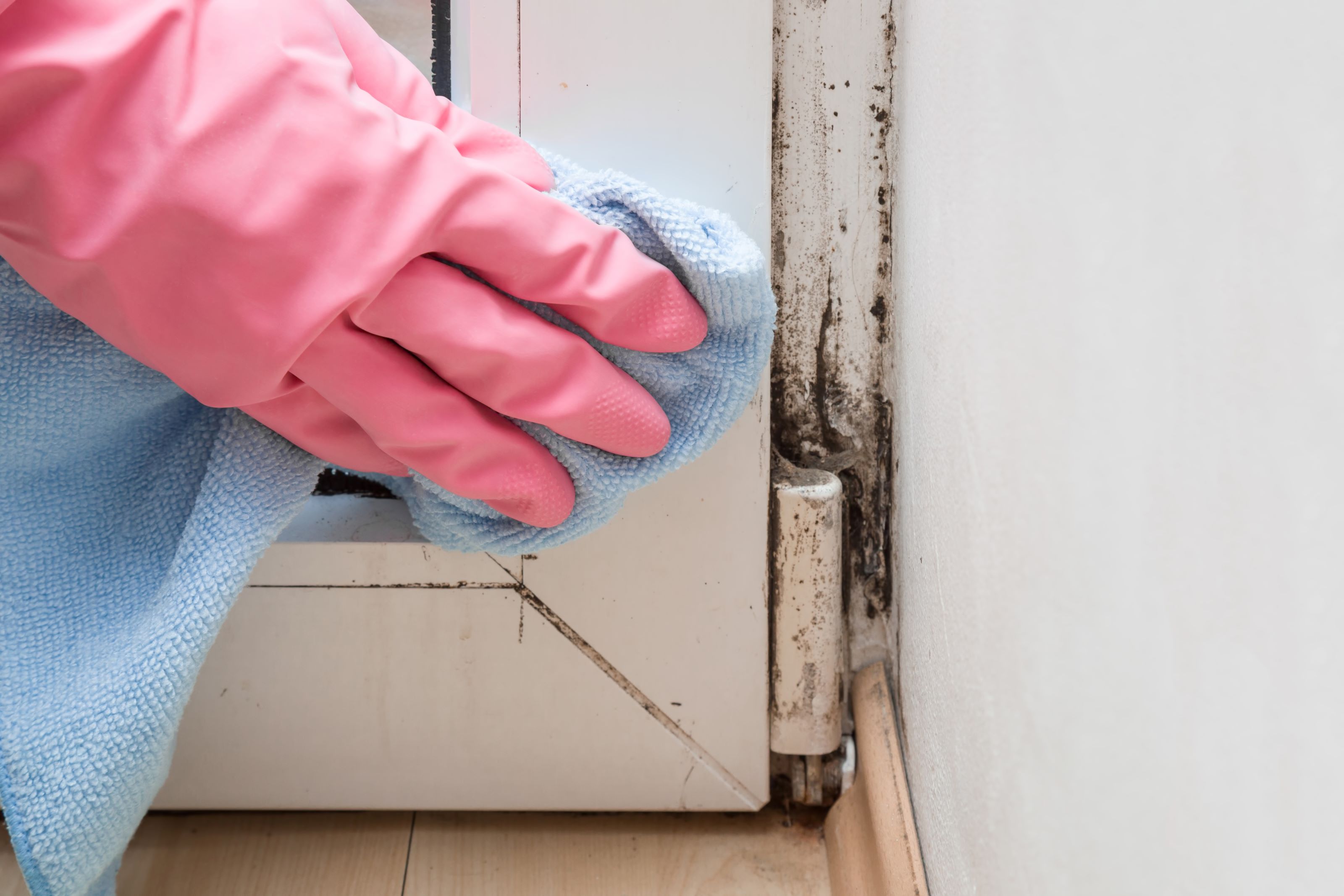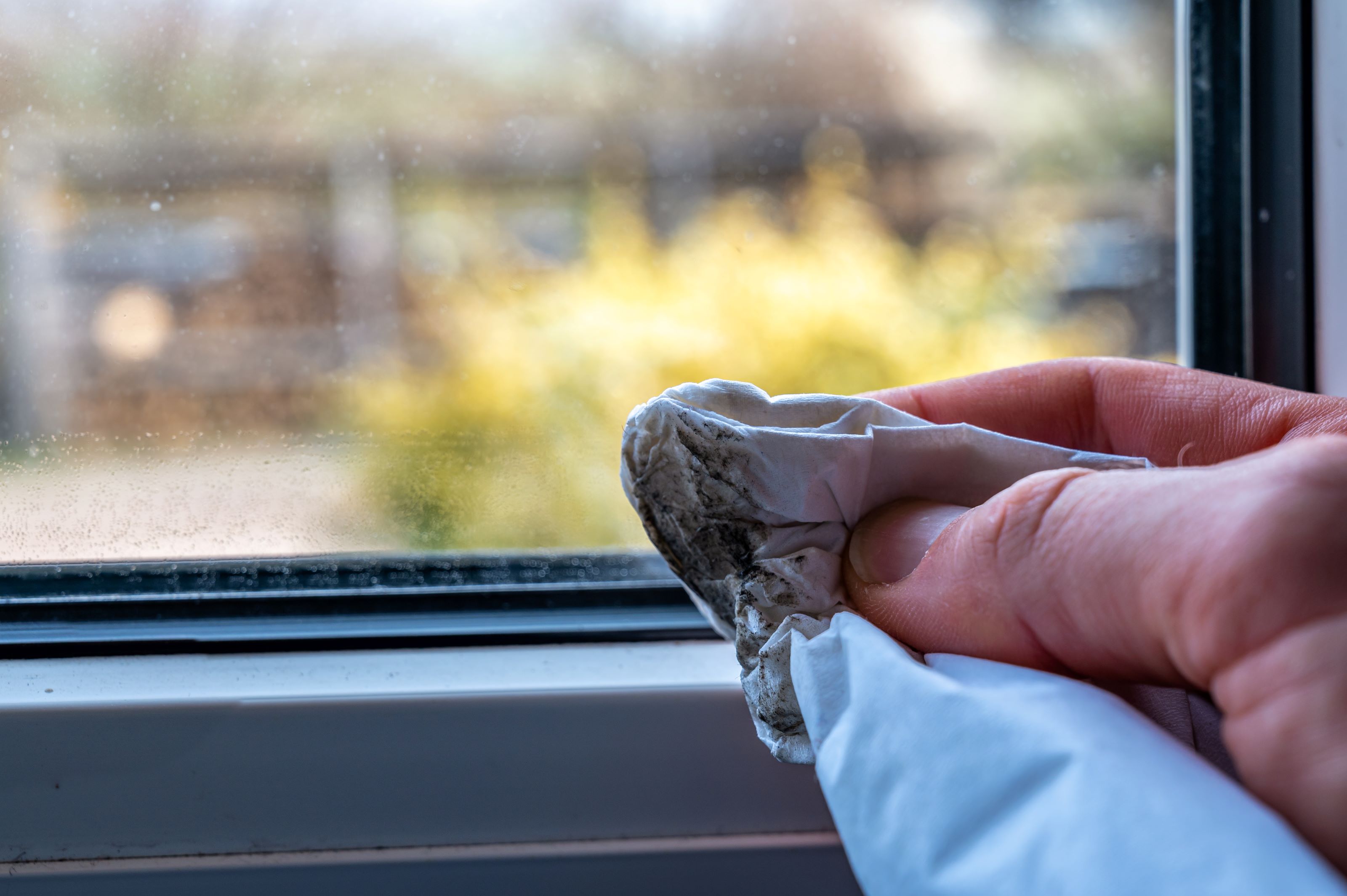How to get rid of black mould on UPVC window sealant and other window types
Black mould is unsightly and can damage window frames so it is important to tackle it quickly to stop it festering

Black mould on UPVC window sealant or elsewhere in the home should never be ignored. It's unsightly, can produce a nasty smell, damage your windows, and potentially spread across paint, wallpaper, and plaster. It can also cause respiratory health problems.
Window sealant as well as window putty and other glass fixatives can be particularly susceptible to mould growth due to window condensation making the area a perfect breeding ground, with plenty of food, moisture and warmth.
Therefore, removing it quickly before the black mould on UPVC sealant is allowed to spread is important, and this can usually be simple and easily removed if caught in the early stages of infestation.
Why is there black mould on window sealant?
Black mould outbreaks are usually triggered by excess moisture from condensation, which is caused by a disparity in temperature change. This is more common in the winter months when a room's warm air meets the cool glass.
When hot and humid air form, for example, showers or cooking, comes into contact with a colder surface like glass, it turns back into water droplets, which can settle on sealant.
How to stop condensation on windows is about identifying and eliminating the source of the excess moisture. Humidity can cause mould in bathrooms, kitchens and other rooms so solving this is often down to improving ventilation. This can be fixed by opening doors and windows, using extractor fans (check out our best bathroom extractor fans and best kitchen extractor fans guides), trickle vents over windows, a portable dehumidifier, like this low energy dehumidifier from Meaco on Appliances Direct, and drying clothes outside or in a well-ventilated area.
If the dampness on the window comes from a structural issue, such as cracked brickwork, it will require work on the house to tackle the leak and then extensive damp-proofing work by a professional, which involves chemical sprays to kill the mould and then waterproofing agents. You can check out more advice on this in our guide on how to treat damp.

How do you remove mould from window sealant?
You can damage your window frame if you use the wrong products, so don’t use a glass cleaner, bleach, methylated spirits, white spirits, WD40, cream cleaners, scouring powder or other abrasive cleaners, caustic or ammonia-based cleaning agents, steel wool or scouring pads.
The best options are commercial mould sprays, like HG plastic cleaner which is available to buy on Amazon, or a paste of white vinegar and baking soda that you can easily make yourself and use a sponge or microfibre cloth to apply and rinse off. If you have leaded windows, don't use anything containing vinegar and take specialist advice, meanwhile additional advice on cleaning black mould off UPVC windows is in the next section below.
Always follow the instructions on the label with store-bought sprays, and use the product as directed, wearing rubber gloves and old clothes as it may stain your clothes or damage your skin, and make sure the area that you are cleaning is well-ventilated and away from children and pets. Also, it's worth testing products on a small inconspicuous area first to ensure there will be no adverse effects.
Of course, simply removing black mould is a temporary fix, so you must tackle the underlying issue of excess moisture and poor ventilation in the long term to prevent black mould on UPVC window sealant and other window types returning.
Is there a different technique for UPVC windows?
Bleach and white spirits in particular can turn white UPVC brown, so never use them.
You can still use the advice above, but window manufacturer Everest recommends making a mixture of one cup of vinegar to four cups of hot water, then spraying it on the UPVC using a spritzer bottle.
Black mould can strike anywhere in a home and it can also spread fast with the right conditions. It might be worth reading our black mould in bathrooms guide on how to tackle that if this is a problem in your home too.
Get the Homebuilding & Renovating Newsletter
Bring your dream home to life with expert advice, how to guides and design inspiration. Sign up for our newsletter and get two free tickets to a Homebuilding & Renovating Show near you.
Sam is based in Coventry and has been a news reporter for nearly 20 years. His work has featured in the Mirror, The Sun, MailOnline, the Independent, and news outlets throughout the world. As a copywriter, he has written for clients as diverse as Saint-Gobain, Michelin, Halfords Autocentre, Great British Heating, and Irwin Industrial Tools. During the pandemic, he converted a van into a mini-camper and is currently planning to convert his shed into an office and Star Wars shrine.

